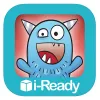
Digital Citizenship Week is October 20–24!
Join teachers worldwide to promote a healthy, positive approach to media and tech.
Take a look inside 4 images
World's Worst Pet - Vocabulary
Pros: Music, cool characters, and relevant words keep students interested.
Cons: The story doesn't always connect with the vocabulary words.
Bottom Line: Learn the meaning of vocabulary words through fun games, and put it to good use as part of everyday conversation.
Teachers can incorporate World's Worst Pet - Vocabulary into their vocabulary instruction in the classroom. They can have students start at Level C, Set 1, for example, and go through each set one by one, monitoring their progress as they go. Or they can choose specific sets related to what students are learning in the classroom.
Individual sets are not labeled by topic, but teachers can tap through the various levels and sets to find word lists that fit a specific unit or general subject area. The design makes it ideal for use by individual students, but teachers may also have students study vocab sets in small groups or go through a set as part of a whole-class vocabulary review session.
Students follow the story of Snargg, possibly the world's worst pet, as they attempt to get him home. In order to get him there, they must complete a series of vocabulary challenges and watch Snargg get into various antics. The vocabulary words are organized into levels and sets. Students first select a level, and then select a specific set within the level. Each set has a different theme -- for example, students may see words related to music, life cycles, or shopping.
According to the developers, World's Worst Pet targets Tier Two and domain-specific words, which simply means it focuses on relevant vocabulary. Kids will find that they can actually put the words they learn to good use as part of their daily lives. Within the app itself, they also have the opportunity to use the words and definitions to play four different games.
Along with introducing students to Tier Two and domain-specific vocabulary, World's Worst Pet has students practice using the words in four different ways. They play games and answer questions that require them to use the words in context, identify synonyms and antonyms, and use the words to complete sentences. During a set with a music-related theme, for example, students may be given the word "performance," and must complete a sentence using the word, select a synonym of the word, or answer a question such as "Where would a performance most likely take place?"
The app focuses on ensuring that students fully understand each set of words. Before even playing the games, they're given the opportunity to review the words, their definitions, and Spanish cognates. When they incorrectly answer a question, they are shown the definition and additional information to help them understand why their answer wasn't correct. After students complete a set, the app also encourages them to take learning further by suggesting writing prompts that incorporate the words.












